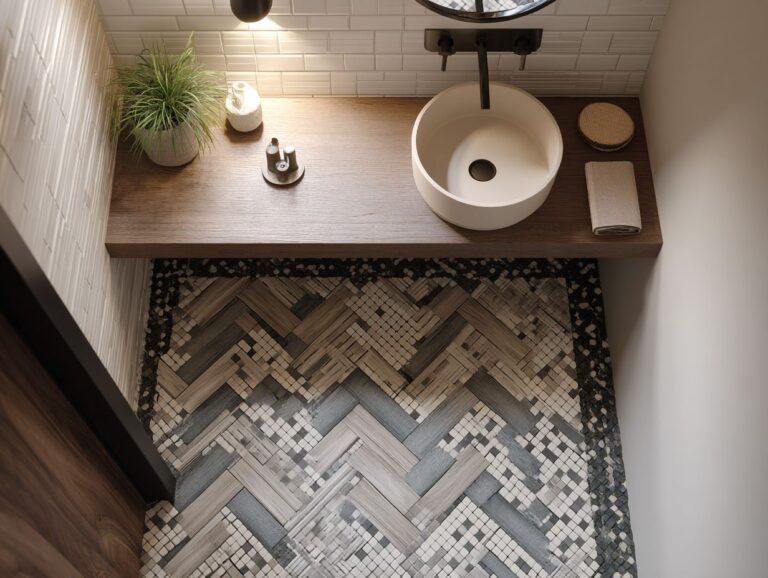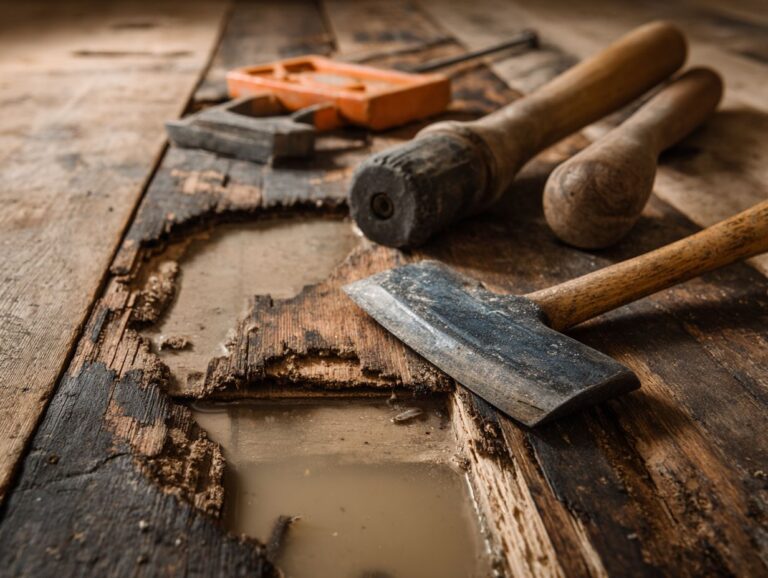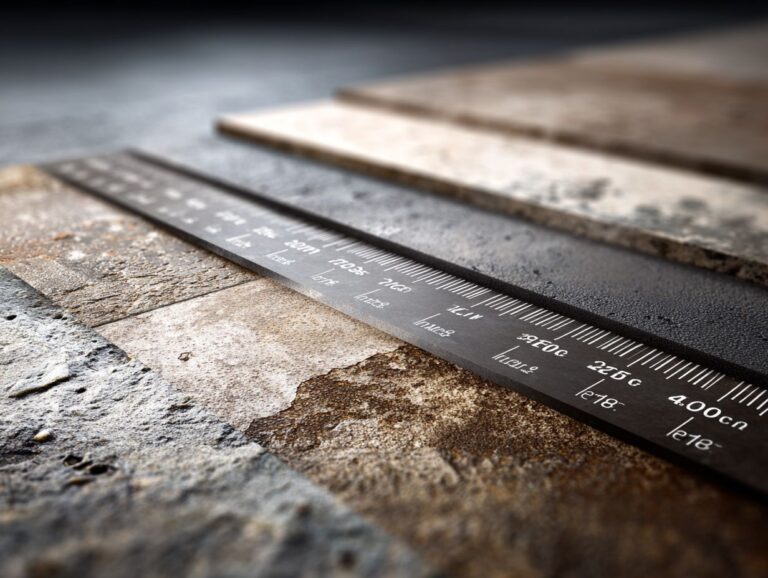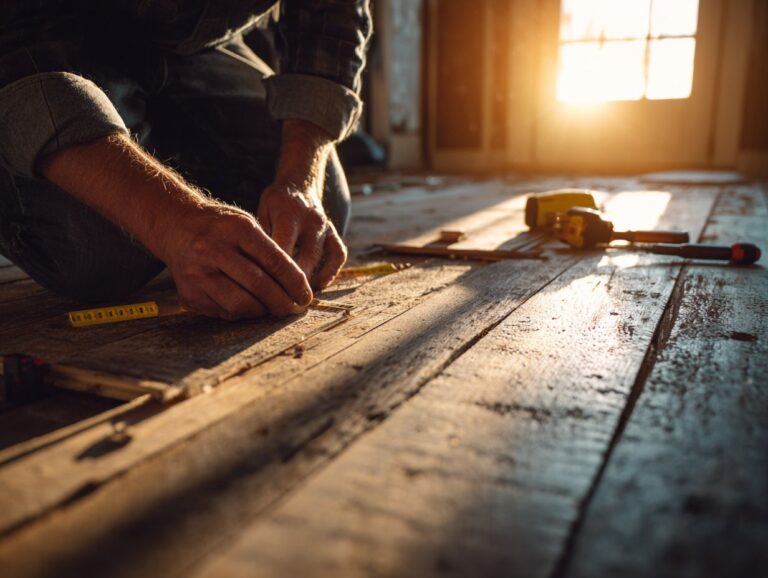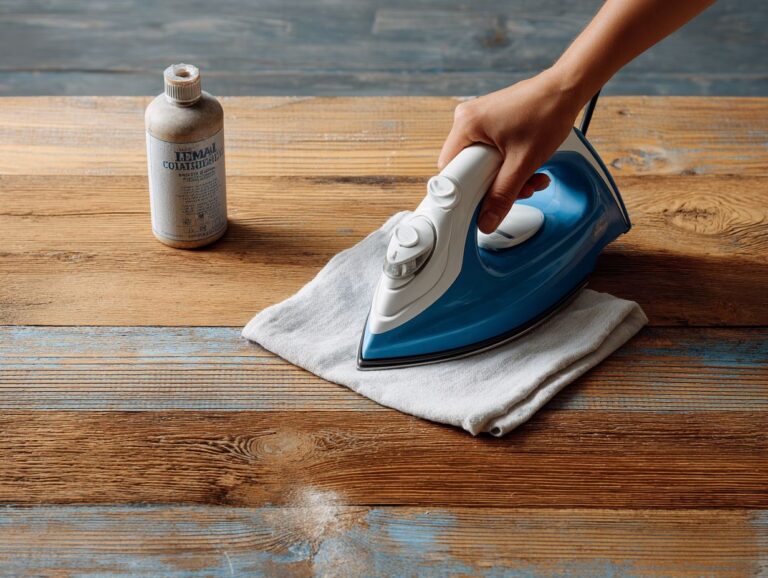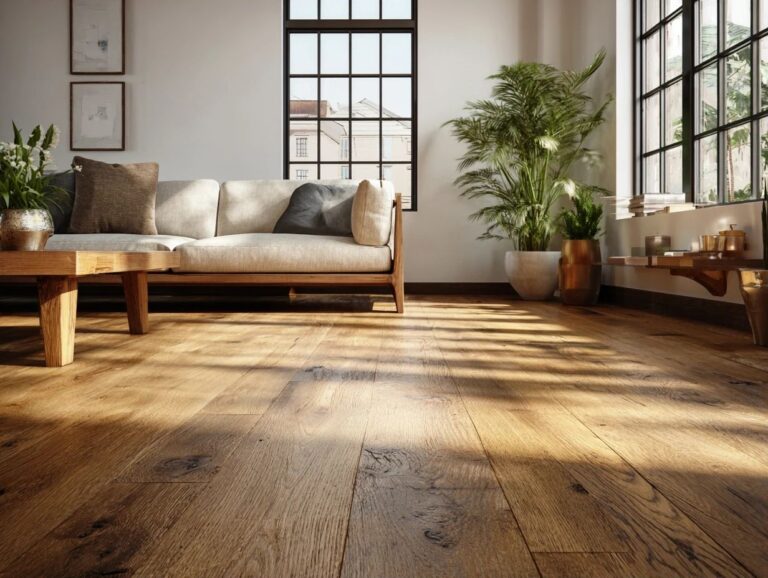Minimalist Flooring Design – Less is More Approach
Contents
- Introduction to Minimalist Flooring Design
- Principles of Minimalist Flooring
- Minimalist Flooring and Design Trends
- Minimalistic Design Statistics: Consumer Preferences
- Minimalistic Design Statistics: Market Growth
- Minimalistic Design Statistics: Performance Metrics
- Minimalistic Design Statistics: Interior Design
- Minimalistic Design Statistics: Brand and Packaging
- Emphasis on Simplicity
- Neutral Color Palettes
- Natural Materials
- Types of Minimalist Flooring
- Benefits of Minimalist Flooring
- Choosing the Right Flooring for Your Space
- Installation Tips for Minimalist Flooring
- Frequently Asked Questions
- What is the concept behind minimalist flooring design?
- What type of flooring is best for a minimalist design?
- How does a minimalist flooring design impact the overall aesthetic of a room?
- What are the advantages of using a “less is more” approach in flooring design?
- Can a minimalist flooring design still be visually appealing?
- How can I add interest to a minimalist flooring design?
Introduction to Minimalist Flooring Design
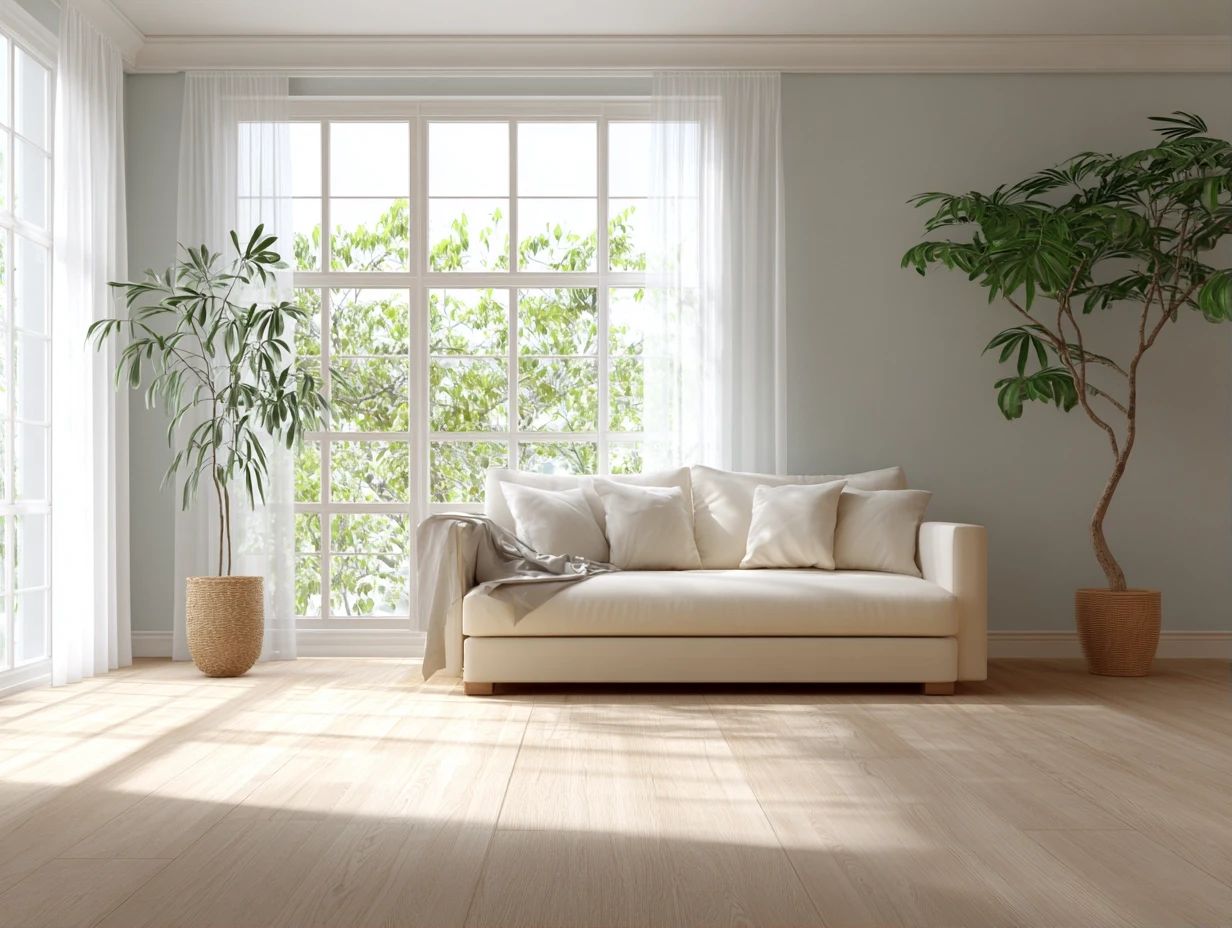
Key Takeaways:
Definition of Minimalism in Design
Minimalism in design means focusing on simplicity by removing unnecessary elements to create a peaceful and tidy look.
This philosophy finds its roots in various design movements, notably Scandinavian and Japanese aesthetics, which emphasize functionality and a connection to nature.
Real-world examples include the Muji store concept, which showcases products in minimalist layouts, and the home of design icon Tadao Ando, featuring open spaces with natural light and clean lines.
To apply minimalism, focus on:
- Decluttering your space
- Opting for neutral color palettes
- Investing in multifunctional furniture, such as a sleek coffee table that doubles as storage
Importance of Flooring in Minimalist Spaces
Flooring is important in minimalist design, shaping the appearance and atmosphere of the space.
Picking the right flooring can brighten a space and make it feel open. Polished concrete, for example, bounces light well, which makes rooms seem bigger and more open.
Light-toned woods like maple or ash add warmth and keep spaces looking clean and open. Opting for large-format tiles can further minimize grout lines, enhancing the seamless appearance essential to minimalist interiors.
Together, these choices create a peaceful setting that combines simplicity and elegance.
Principles of Minimalist Flooring
The basics of minimalist flooring stress a unified design that matches the minimalist style, concentrating on simplicity, color, and material selection. For those interested in achieving a balanced look, understanding the contrast between textured and smooth flooring options can be essential.
Minimalist Flooring and Design Trends
Minimalist Flooring and Design Trends
Minimalistic Design Statistics: Consumer Preferences
Minimalistic Design Statistics: Market Growth
Minimalistic Design Statistics: Performance Metrics
Minimalistic Design Statistics: Interior Design
Minimalistic Design Statistics: Brand and Packaging
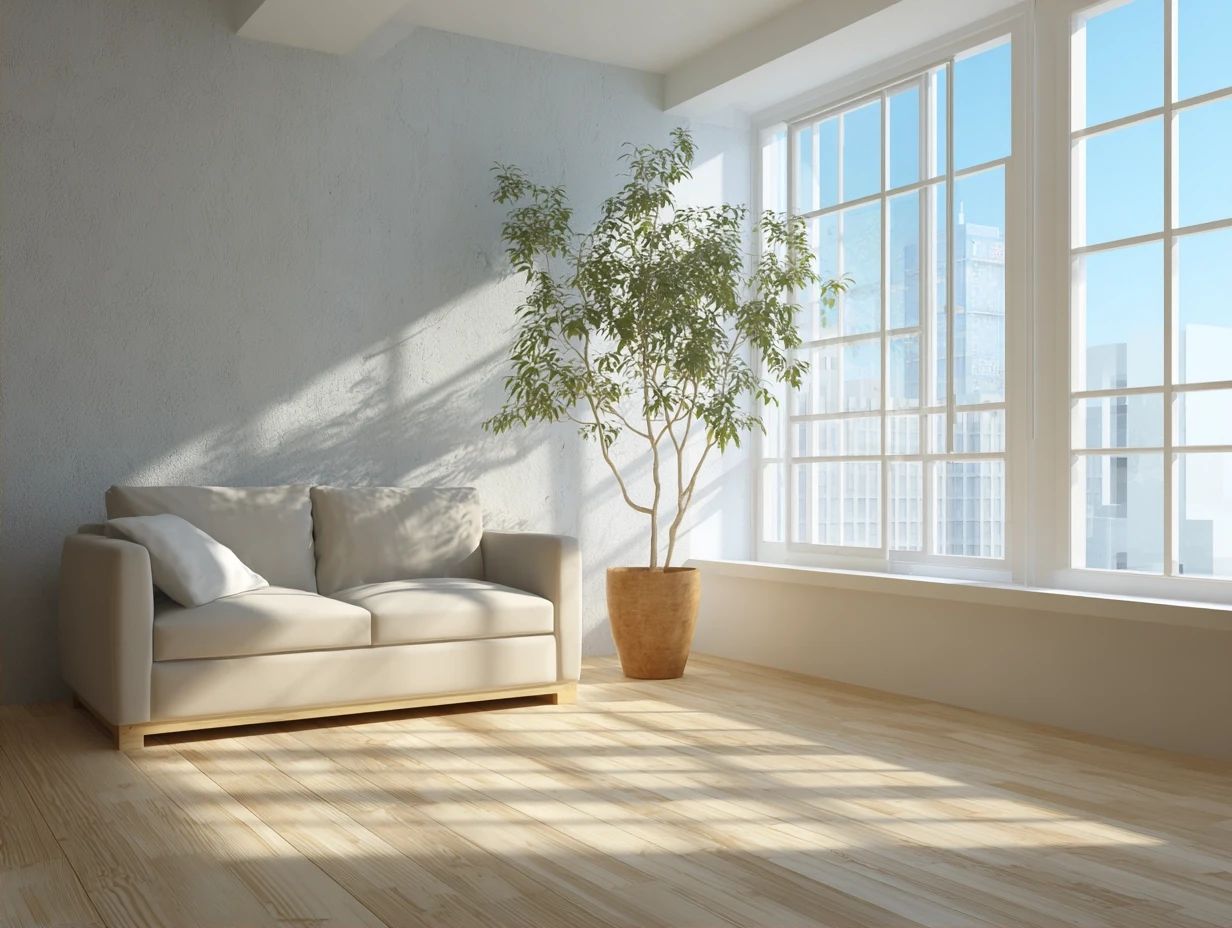
As design styles change, the Minimalist Flooring and Design Trends for 2023 reflect a significant shift towards simplicity and functionality. This data shows what consumers like, how the market is growing, performance measurements, interior design, and brand packaging, highlighting the broad popularity and strategic benefits of minimalism.
The data reveals that 63% of consumers prefer brands with a minimalistic design A clear preference for clean, simple designs that improve how users interact with them. Additionally, 62% of consumers express increased interest in brands presented through Instagram Stories, highlighting the power of visual storytelling in minimalistic formats to capture consumer attention.
- Market Growth: The worldwide UX/UI design industry is expected to increase by $12.8 billion by 2026, with an expected CAGR of 7.5% for minimalistic design over the next five years. This growth shows the increasing need for simple and easy-to-use digital interfaces that improve user experience.
- Performance Metrics: Minimalist websites boast a 30% faster load time, resulting in a 15% lower bounce rate and 15% higher conversion rates for e-commerce platforms. These improvements demonstrate that prioritizing simplicity in online environments results in quicker and more effective outcomes, where speed and smooth functioning are key.
In the realm of interior design, 48% of designers report high demand for minimalist aesthetics in 2023, while the trend towards eco-friendly homes with minimalistic designs is rising by 20%. This change shows that more people are becoming aware of and interested in eco-friendly living, along with wanting simple and practical spaces.
- Brand and Packaging: Minimalistic packaging increases brand recall by 30%, illustrating its effectiveness in creating memorable brand identities. The worldwide market for environmentally friendly packaging is expected to grow to a value of $413 billion by 2027, highlighting the convergence of minimalism and sustainability in packaging solutions.
The Minimalist Flooring and Design Trends Data highlights the widespread attraction of minimalism in different design fields. As consumers move towards simplicity and environmentally friendly choices, brands and designers that use minimalistic ideas are likely to gain more interest and success in the next few years.
Emphasis on Simplicity
The foundation of minimalist flooring lies in simplicity, where each element serves a purpose without unnecessary embellishments or distractions.
To create a peaceful atmosphere, think about using big tiles that provide a smooth appearance with fewer grout lines, which can make areas seem more spacious.
Bamboo flooring is a great choice. It’s environmentally friendly and adds warmth without being complicated.
When selecting furniture, opt for pieces that are functional yet unobtrusive, such as low-profile sofas or natural wood tables.
Add decor sparingly-choose a few statement pieces like a slim plant or an oversized artwork, ensuring they complement the clean lines of your flooring and overall design.
Neutral Color Palettes
A neutral color palette improves the minimalist look, creating a calm and spacious environment.
Soft tones like beige, taupe, and gray create a tranquil environment, allowing for a seamless flow between spaces. For example, using light gray floors with white walls can make a room look bigger and more welcoming.
Consider using complementary accents, such as a soft blue or muted green in furniture or decor, to add depth without overwhelming the senses. This method helps you relax and makes it easy to update your space with new seasonal decorations.
Natural Materials
Incorporating natural materials like hardwood, polished concrete, and bamboo flooring aligns with minimalist values of sustainability and organic design.
These materials improve the look of a space and help protect the environment.
Hardwood from carefully managed forests lasts a long time and lowers carbon emissions. Bamboo, a rapidly renewable resource, offers a sustainable alternative to traditional wood options.
To maintain these floors, use eco-friendly cleaning solutions and avoid excessive moisture, as these can damage the surfaces.
Consider working with local suppliers to support community economies and reduce transportation emissions, which further amplifies the positive environmental impact of your flooring choices.
Types of Minimalist Flooring
Different flooring choices suit minimalist styles, each with specific advantages in appearance, upkeep, and eco-friendliness. For those considering vinyl options, our comparison of sheet vinyl, vinyl plank, and vinyl tile provides valuable insights into how each type can enhance minimalist aesthetics while offering ease of maintenance and sustainable benefits.
Hardwood Flooring
Hardwood flooring stands out as a classic choice in minimalist design, providing warmth and elegance through its natural grain and texture.
When choosing hardwood, consider options like maple, which offers a light tone and fine grain, ideal for brightening spaces.
Oak has distinct grain patterns, varies in color from light to medium, and is durable, making it suitable for high-traffic areas.
To install, put a moisture barrier to stop wood from bending. Use nails or glue for solid hardwood.
Use a pH-neutral cleaner on your floors to keep them shiny, saving you from expensive refinishing later.
Concrete Flooring
Polished concrete flooring offers a sleek and modern option that complements minimalist aesthetics while being highly durable and low-maintenance.
This flooring option is affordable and works well with many design styles. For example, a polished concrete floor can be finished with a high-gloss shine for a contemporary look, or a matte finish for a more understated elegance.
Many coffee shops and art galleries use this flooring to create an inviting atmosphere that seamlessly integrates with their decor. Because it lasts a long time, you don’t have to replace it often, which makes it a good long-term choice.
With proper sealing, it resists stains and spills, enhancing its appeal for both residential and commercial spaces.
Vinyl and Laminate Options
Luxury vinyl planks and laminate flooring offer budget-friendly and flexible options to create a minimalist look while still looking stylish.
When choosing between these options, consider installation ease and upkeep.
Luxury vinyl planks (LVP) are usually easier to put in place because of their click-lock design, which makes them a good choice for people who like to do home projects themselves. Laminate, while often more budget-friendly, can be trickier to lay down properly.
Maintenance-wise, LVP is waterproof and requires just regular sweeping and occasional mopping, while laminate, though durable, is not water-resistant and should be cleaned with care.
For eco-conscious choices, look for brands like Karndean and Pergo, which offer sustainable materials and manufacturing practices.
Tile Flooring
Large format tiles present a contemporary flooring option that minimizes grout lines and visual noise, aligning perfectly with minimalist design principles.
When selecting materials, both ceramic and porcelain tiles offer durability and style. Ceramic tiles generally cost less and are available in many colors, making them fit well with various styles.
Porcelain, being denser and less porous, is ideal for high-traffic areas and can mimic natural stone for added elegance.
To improve a minimalist style, try using a black and white color scheme with big, consistent tiles, letting the clean look of the area stand out.
You can install it yourself, but make sure the floor is level and use a wet saw for precise cuts to get the best outcome.
Benefits of Minimalist Flooring
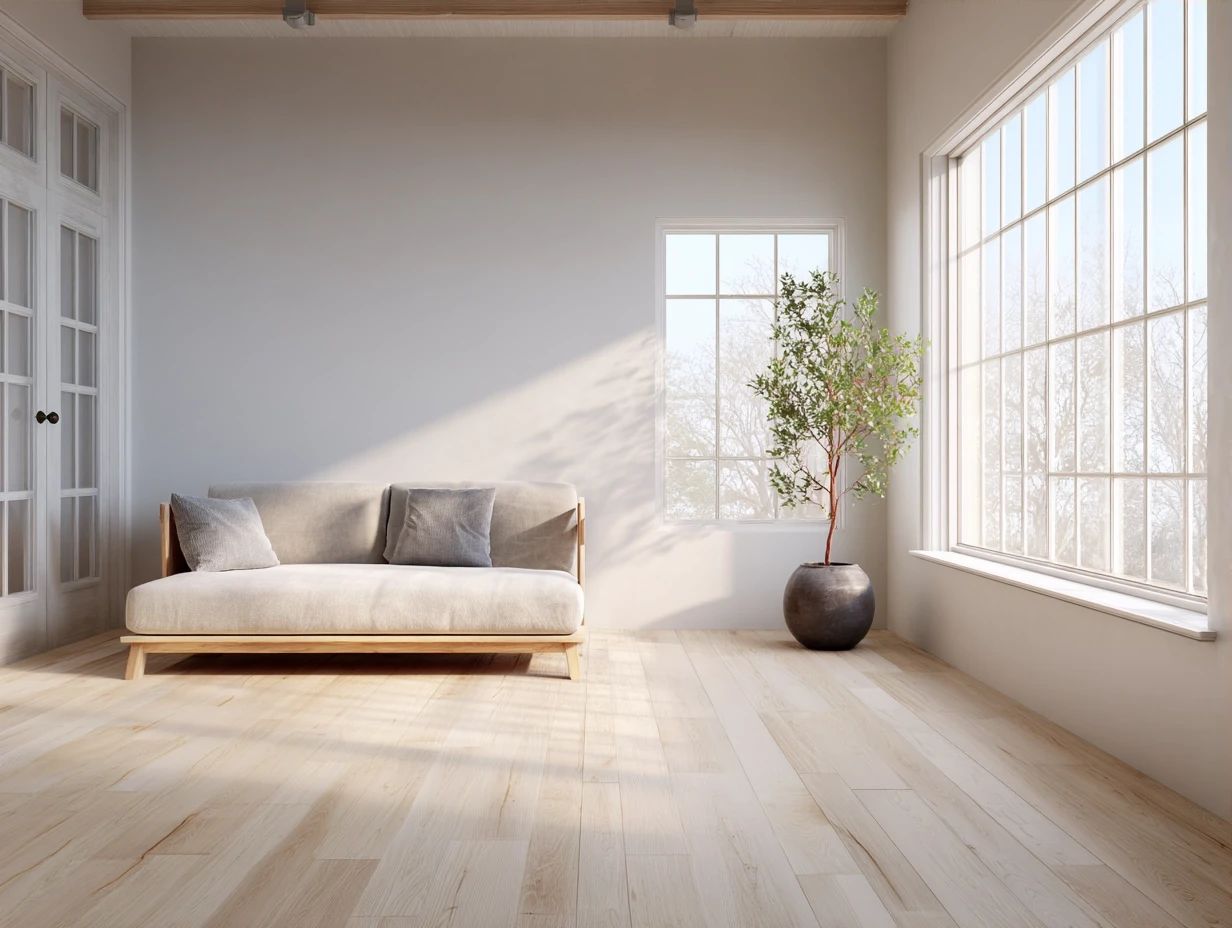
Minimalist flooring offers several advantages, like easy maintenance, making areas seem more spacious, and a timeless design that remains stylish. To further enhance the space, consider how minimalist design can contribute to open concept homes. Our related callout: Creating Flow with Flooring – Open Concept Homes offers valuable insights.
Easy Maintenance
One of the key advantages of minimalist flooring is its low-maintenance nature, allowing homeowners to enjoy their spaces without added upkeep stress.
Popular low-maintenance flooring options include:
- Luxury vinyl planks
- Laminate
- Polished concrete
Luxury vinyl, for instance, is resistant to scratches and water, requiring only a damp mop for cleaning, while traditional hardwood can demand refinishing and special cleaners. In contrast, laminate mimics wood’s appearance but saves time with quick dusting and sweeping routines.
Polished concrete lasts a long time and requires little maintenance. Spills can be quickly cleaned without leaving marks. Many users report cutting cleaning time by up to 50% compared to conventional carpeting or unfinished wood floors.
Enhanced Space Perception
Minimalist flooring creates an illusion of spaciousness, contributing to a home environment that feels open and inviting.
The selection of color, material, and design is important for this effect. Using light-colored hardwood or polished concrete can make small rooms seem bigger by reflecting light.
For instance, using white oak flooring in a compact living room allows natural light to bounce, enhancing the feeling of openness. Opting for large tiles instead of traditional small ones minimizes grout lines, further promoting a seamless look.
Using the same flooring in nearby rooms improves movement and keeps the look simple by removing visual obstacles.
Timeless Aesthetic Appeal
Minimalist flooring consistently complements different interior styles and can easily adjust to new trends.
For instance, a mid-century modern home featuring light oak flooring can effortlessly transition into a contemporary space with minimalist decor. This type of flooring works well with various styles, from Scandinavian minimalism to industrial chic.
Tools like the Sherwin-Williams ColorSnap can help choose complementary wall colors that highlight the flooring. Examples of homes with concrete or bamboo floors demonstrate how these materials last well over time, keeping their look across different styles and staying environmentally friendly and strong.
Choosing the Right Flooring for Your Space
Picking the right flooring means considering how you live, what each room is used for, and your personal style, all while keeping things simple. As mentioned in our analysis of light vs dark flooring, the choice can significantly impact the ambiance of your rooms.
Assessing Your Lifestyle Needs
Knowing your lifestyle needs is important when choosing flooring, as how long it lasts and how much upkeep it needs can differ greatly.
Begin by asking yourself a few key questions. How much foot traffic do you anticipate? If you have pets, consider their activity level and any potential for spills.
Regular maintenance is necessary; for instance, hardwood floors should be refinished every few years, while luxury vinyl tile is simple to maintain and water-resistant. A busy family might opt for laminate or tile, which can withstand wear and tear, whereas a quieter household might enjoy the comfort of carpet or natural wood.
This thoughtful assessment will guide you toward the best flooring choice for your space.
Considering Room Functionality
The functionality of each room plays a significant role in determining the most suitable flooring choice for a minimalist space.
For living areas, durable hardwood or laminate is ideal, offering longevity and ease of maintenance. For bathrooms, consider moisture-resistant vinyl or tile, which can withstand humidity without warping.
Kitchens benefit from ceramic or porcelain tiles, as they combine durability with easy cleaning. In bedrooms, using soft carpets or cork flooring can make the space more comfortable and quieter, creating a warm and welcoming atmosphere.
Assess each room’s activity levels and moisture exposure to choose the right flooring that complements both functionality and the minimalist aesthetic.
Budgeting for Minimalist Flooring
When planning a budget for simple flooring, consider both the starting price and the ongoing benefits to make sure your spending matches minimalist principles.
Studying resources helps people make good decisions. For instance, bamboo flooring typically ranges from $3 to $8 per square foot, offering durability and sustainability.
Laminate may cost between $1 and $5 per square foot, providing a budget-friendly option with a variety of styles. To save on installation, consider DIY methods where feasible.
Plan to spend around $0.50 to $1 per square foot for underlayment to improve sound insulation. Set aside an extra 10-15% of your flooring budget for potential waste or unexpected expenses.
Installation Tips for Minimalist Flooring
Properly installing minimalist flooring depends on thorough preparation and the right skills to get a perfect result.
Preparing the Subfloor
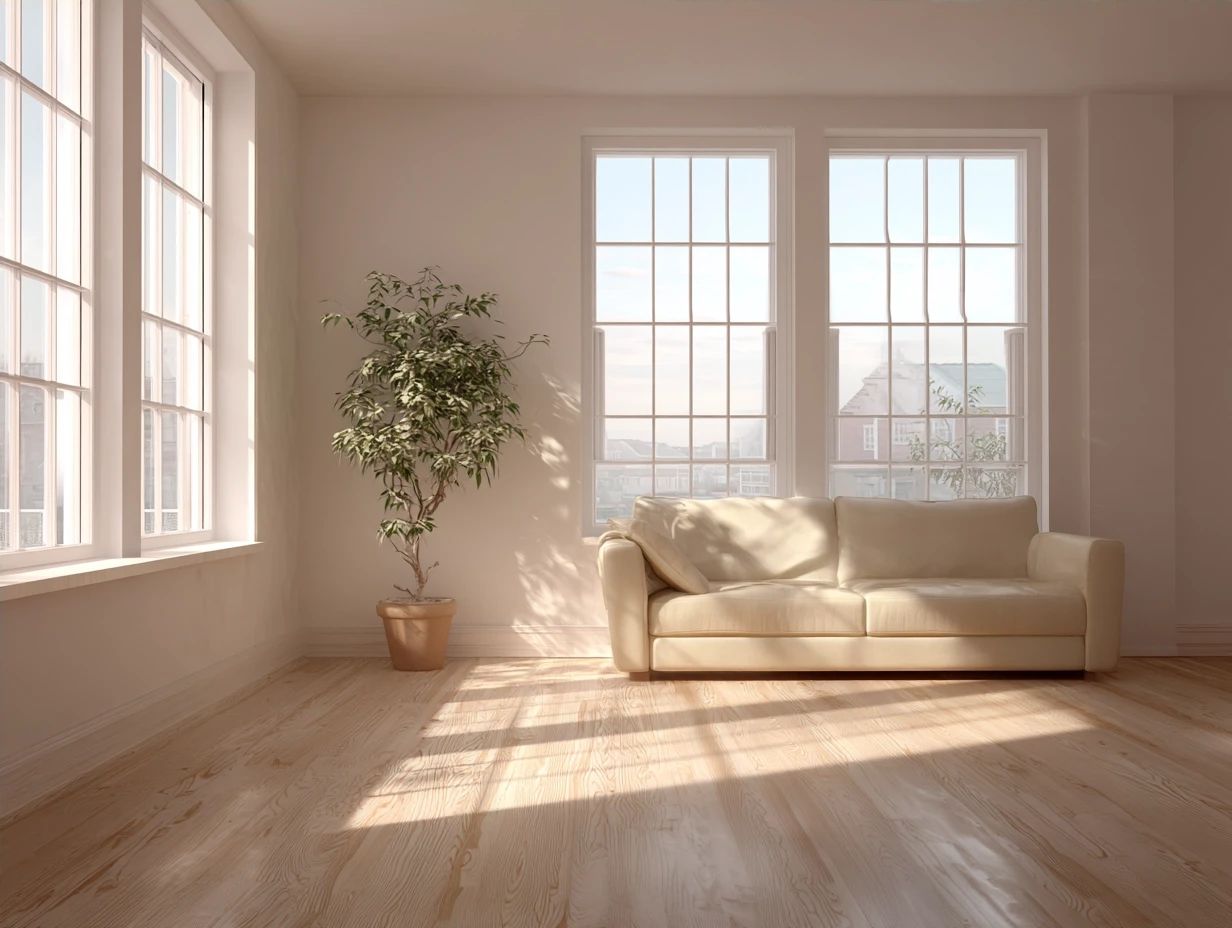
Proper subfloor preparation is essential for a successful flooring installation, ensuring durability and performance of the finished surface.
Start by checking moisture levels with a moisture meter, aiming for readings below 12% for wood subfloors. Then, assess the levelness of the subfloor; you can use a long level or straightedge to identify high or low spots.
If necessary, use a self-leveling compound to create a smooth surface. Clear away all debris and dust before starting the installation.
For concrete subfloors, inspect for cracks and fill them with a suitable filler to prevent issues later. Following these steps will lead to a solid foundation for your new flooring.
Choosing the Right Installer
Choosing the right flooring installer is important for a successful minimalist design, so homeowners should carefully research their choices.
Start by evaluating potential installers based on their experience with minimalist flooring. Focus on individuals who present projects in their portfolios that show they know clean lines and understated designs.
Request contacts from previous customers who can talk about their dependability and quality of work. Inquire about their familiarity with specific materials like bamboo or polished concrete, as these are popular choices in minimalist designs.
This method helps you select an experienced installer who understands the details of a simple design.
Final Thoughts on Minimalism in Flooring
Minimalist flooring focuses on creating a clean space that makes daily life better through thoughtful design choices.
To achieve the perfect minimalist aesthetic, consider materials like bamboo for its sustainability and warmth, or polished concrete for a modern edge. Laminate flooring can also serve as an affordable alternative that mimics natural textures while ensuring durability.
When selecting colors, neutral tones like whites, grays, and light woods keep spaces feeling open and airy. Remember to use natural light to improve the simplicity and beauty of your flooring choice.
Look at these options to find a floor that matches your style and improves your home.
Frequently Asked Questions
What is the concept behind minimalist flooring design?
The concept behind minimalist flooring design is to create a simple and uncluttered space by using a limited number of materials and a neutral color palette. The goal is to achieve a clean and modern look that emphasizes the beauty of the flooring itself.
What type of flooring is best for a minimalist design?
The best flooring for a minimalist design is one that has a seamless and uniform appearance, such as hardwood, concrete, or tile. These types of flooring also have a simple and neutral color palette, which aligns with the minimalist approach.
How does a minimalist flooring design impact the overall aesthetic of a room?
A minimalist flooring design can greatly impact the overall aesthetic of a room by creating a sense of spaciousness and simplicity. This design approach also allows other elements in the room, such as furniture and decor, to stand out and make a statement.
What are the advantages of using a “less is more” approach in flooring design?
The “less is more” approach in flooring design has several benefits, such as a modern and clean appearance, simpler maintenance and cleaning, and a timeless design that fits easily into any style or decor.
Can a minimalist flooring design still be visually appealing?
Absolutely. While the focus of minimalist design is on simplicity and minimalism, this doesn’t mean it has to be boring or unattractive. With the right combination of materials, textures, and colors, a minimalist flooring design can be visually stunning and create a beautiful backdrop for any room.
How can I add interest to a minimalist flooring design?
To add interest to a minimalist flooring design, consider incorporating different textures, such as a mix of smooth and rough materials, or adding a pop of color through a rug or accent piece. You can also play with different flooring patterns, such as herringbone or chevron, to add visual interest to the space.
